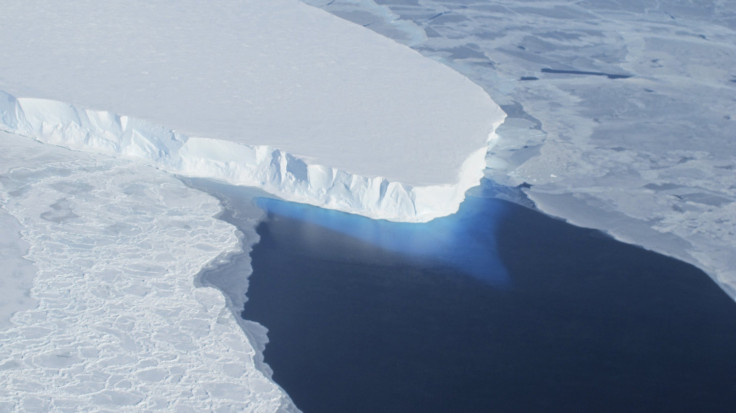Climate Change: West Antarctica’s Glaciers Retreating Faster Than Previously Thought

For Antarctica, 2016 has been a year of one bad news after another.
In May, a study published in the journal Nature reported that regions of the gargantuan Totten Glacier — the most rapidly thinning glacier in East Antarctica — had become “fundamentally unstable.” In June, the National Oceanic and Atmospheric Administration revealed that, for the first time in 4 million years, carbon dioxide levels at the South Pole have passed the symbolic “red line” of 400 parts per million. Then, in August, scientists monitoring the condition of the Larsen C ice shelf — the fourth largest Antarctic ice shelf — found that the region had a huge crack spreading across its surface.
Now, two new studies conducted by researchers at NASA and the University of California, Irvine, have revealed that glaciers in West Antarctica are retreating at an unprecedented rate due to warm water circulating beneath the ice shelf. For instance, Smith Glacier — which is the fastest melting of the three glaciers studied by the researchers — was found to be melting nearly six times faster than previous estimates suggested.
According to one of the studies, published in the journal Geophysical Research Letters, which used radar measurements from the European Space Agency's Sentinel-1 satellite, Smith Glacier’s “grounding line” — the boundary between the bedrock and the ocean — has been retreating at a rate of 1.24 miles per year since 1996. According to the second study, which measured changes in the thickness and height of ice using radar and laser altimetry instruments flown as part of NASA’s Operation IceBridge campaign, the glacier lost between 984 and 1,607 feet in thickness from 2002 to 2009.
During this period, scientists also observed an uptick in loss of mass around the Amundsen Sea region, and scientists had long suspected that substantial influx of warm water beneath the ice shelves must have taken place.
“Our observations provide a crucial piece of evidence to support that suspicion, as they directly reveal the intensity of ice melting at the bottom of the glaciers during that period,” Ala Khazendar of NASA's Jet Propulsion Laboratory, Pasadena, California, who was involved in both the studies, said in a statement released Tuesday. “If I had been using data from only one instrument, I wouldn't have believed what I was looking at, because the thinning was so large.”
This surprisingly fast rate of melt can be attributed to the shape of the underlying bedrock, which, the researchers say, slopes downward toward the continental interior. As a result, when the grounding line retreats and sinks, it allows warm water to flow into the cavity.
“More sections of the glacier become thinner and float, meaning that the grounding line continues retreating, and so on,” Khazendar explained in the statement.
The two other glaciers — Pope and Kohler — are also retreating, albeit at a much slower rate, probably because of the presence of a bedrock that slopes upward toward the interior.
Over the past 100 years, as the planet continues to heat up, global average sea levels have risen nearly 7 inches. Some estimates suggest that if Antarctica’s ice sheet melts completely, it would raise sea levels by over 200 feet — enough to flood the planet's land masses. Although this is not something that is likely to happen anytime soon, the latest study is one of the many pointing toward a warming trend on the continent.
© Copyright IBTimes 2025. All rights reserved.






















